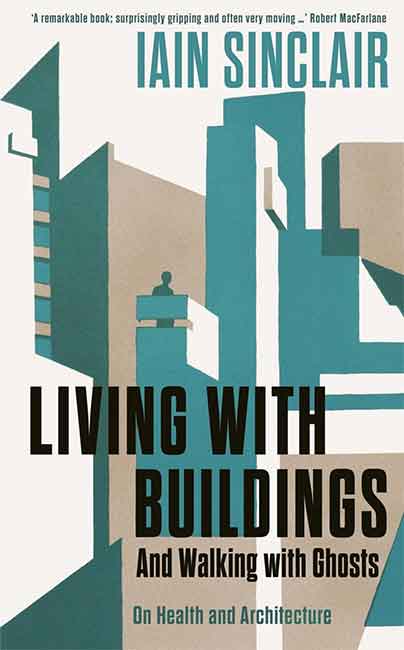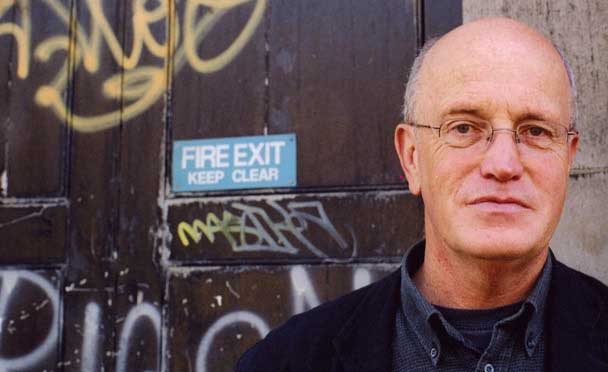
Living with Buildings and Walking with Ghosts, Iain Sinclair
(Profile Books/Wellcome Foundation)
It is a given in Iain Sinclair’s new book, which is subtitled ‘On Health and Architecture’, that people respond to the spaces and places around them, some more than others: ‘Philip is preternaturally alert to manifestations of the uncanny.’ (p 123) Anyone expecting a formal treatise on health and architecture, a scholarly tome or academic treatise, will be disappointed, but fans of Sinclair’s elliptical, meandering prose and thought process will be delighted: this is Sinclair at his best.
Acquaintances, cities, wastelands, strangers and friends are all subject to authorial scrutiny here. How does where we live, where we visit, and our attitudes to that, affect us and our wellbeing?
[W]e are affected by the presence of individual buildings as by the trees of the forest. Each fossilised trunk its own history, each trunk part of a more complex organism: the city. Our traces are felt in the communication between buildings as they register our passage. The system is in precarious balance. (p 27)
Upset this balance, argues Sinclair, and both society and individuals become unsettled, disturbed, even unwell or sick.
Starting and ending in the East End of London, Sinclair takes several discursive journeys on the page, with an overall trajectory delineated by the section headings: MOVE FURTHER OUT. And he does, despite an epigraph by James Sallis that quotes Descartes, who ‘said that all our ills come from a man being unable to sit alone, quietly, in a room.’
Sinclair, of course, is able to sit in a room and ponder, digest and write about where he has been and what he has seen, weaving literary and psychogeographical interpretations through and among his portraits, descriptions, travelogues, gritty realism and mystical interpretations. The reader is saved the trouble of these journeys: we can sit alone in our room and quietly read. Sinclair has travelled so we don’t have to, but we do still have to think.
He makes it all appear so easy. He is adept at capturing the zeitgeist and weaving information and research into his vignettes. The ‘Radiant City’ chapter explores Brutalist architecture and the influence of Le Corbusier (and others) by visiting Jonathan Meades. Among the wine-fuelled banter between them a wealth of information and opinion lurks. Blink and you’d miss it, pay attention and there is a manifesto and ensuing debate.
Mostly Sinclair is more at home in the UK. Apart from France, his only other major excursion here is to visit the sculptor Steve Dilworth (who Sinclair has written about before, referencing shamanism) on the Isle of Harris. It is a kind of pilgrimage, to return a sculptural box to its maker, but Sinclair is also able to reference Meades again, who made a film about this ‘Isle of Rust’, and to introduce the artist Rebecca Hinds into his tale. She is the focus of the final chapter, where her abstract triptych is (or was) installed on the altar in Christchurch Spitalfields, back in London.
Elsewhere, there are sacred mulberry trees, abandoned asylums and London housing estates; not to mention Chris Petit, Andrew Kötting and Brian Catling – Sinclair is nothing if not loyal to his friends and their artistic activities. In the end the issue of wellbeing is a subtext, not the focus, of this book, a by product of where we live and what we do, how we navigate and understand our world. Sinclair makes an excellent navigator and guide.

Rupert Loydell

[…] A link: http://internationaltimes.it/the-urban-wanderer/ […]
Pingback by Living with Buildings and Walking with Ghosts, a review on 26 October, 2018 at 7:28 am